
Halictidae is the second-largest family of Anthophila bees. Halictid species occur all over the world and are usually dark-colored and often metallic in appearance. Several species are all or partly green and a few are red; a number of them have yellow markings, especially the males, which commonly have yellow faces, a pattern widespread among the various families of bees. The family is distinguished by the arcuate basal vein found on the wing.
Ptiloglossa is a small genus of feather-tongued bees within the family Colletidae, endemic to the Americas. Ptiloglossa is one of the most common nocturnal groups of colletids.
Daihinibaenetes is a genus of sand-treader crickets in the family Rhaphidophoridae. There are at least three described species in Daihinibaenetes.

Diapheromera arizonensis, the Arizona walkingstick, is a species of walkingstick in the family Diapheromeridae. It is found in North America.
Paria arizonensis is a species of leaf beetle. It is found in North America.
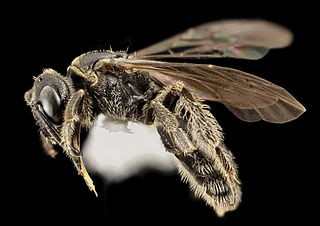
Pseudopanurgus is a genus of mining bees in the family Andrenidae. There are at least 130 described species in Pseudopanurgus. Pseudopanurgus bees often have 2 submarginal cells in their forewings. Their size range for extra-small to small, 3mm to 10mm
Mexalictus is a genus of sweat bees in the family Halictidae. There are more than 20 described species in Mexalictus.
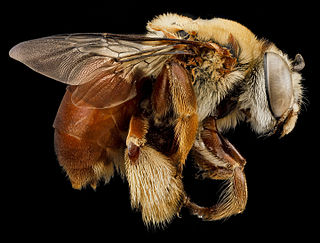
Centris errans, known generally as wandering centris, is a species of centridine bee in the family Apidae. Other common names include the Florida locust-berry oil-collecting bee and spiny bear's-breech. It is found in the Caribbean and North America. The species is one of five from the family Apidae that are endemic to the state of Florida. The species occurs the southernmost portion of Florida.
Amphicosmus arizonensis is a species of bee flies in the family Bombyliidae.
Amphicosmus is a genus of bee flies. There are about five described species in Amphicosmus.
Neltumius arizonensis is a species of leaf beetle in the family Chrysomelidae. It is found in Central America and North America.
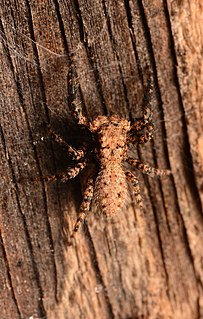
Platycryptus arizonensis is a species of jumping spider in the family Salticidae. It is found in the United States.
Mydas arizonensis is a species of mydas flies in the family Mydidae.

The European legume miner bee is a species of miner bee in the family Andrenidae. Its original distribution is Europe. It has been accidentally introduced to North America long ago, possibly with ship ballast. It is active between April and August. Nests singly in group aggregations. Preferentially collects pollen from clover and sweet clover (Fabaceae).

Ericrocis is a genus of centris-cuckoo bees in the family Apidae. There are at least four described species in Ericrocis.
Colaspis arizonensis is a species of leaf beetle from North America. It is found in southeast Arizona and northwest Mexico. It was first described by the American entomologist Charles Frederic August Schaeffer in 1933.
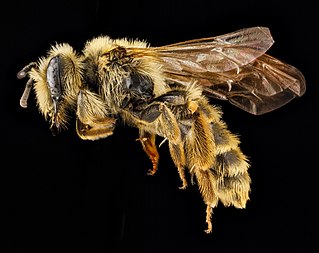
The death camas miner bee, is a species of miner bee in the family Andrenidae. Another common name for this species is death camas andrena. It is found in North America. It specialises in feeding on the highly poisonous Toxicoscordion venenosum and is possibly the only bee that can tolerate its toxins.

The bumped miner bee is a species of miner bee in the family Andrenidae. Another common name for this species is the Nason's andrena. It is found in Central America and North America. It is a generalist, collects pollen from many different plants.

Ceratina arizonensis, the Arizona ceratina, is a species of carpenter bee in the family Apidae. It is found in Central America and North America.
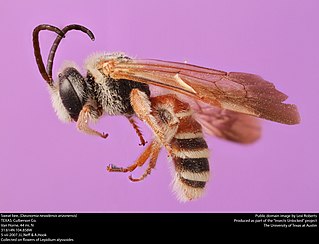
Dieunomia nevadensis, the Nevada nomia, is a species of sweat bee in the family Halictidae. It is found in Central America and North America.










